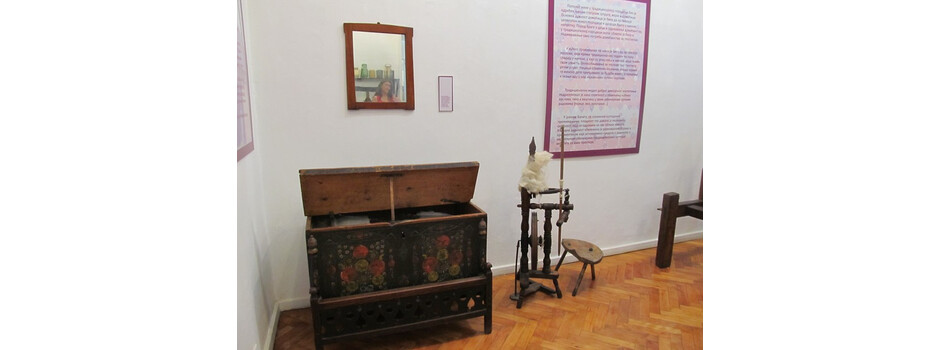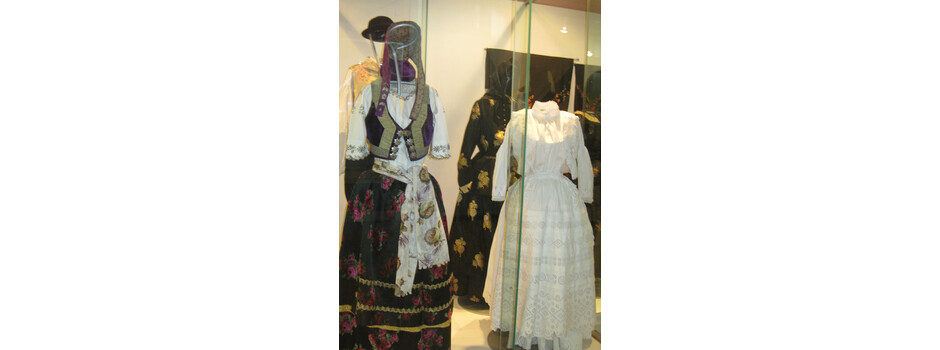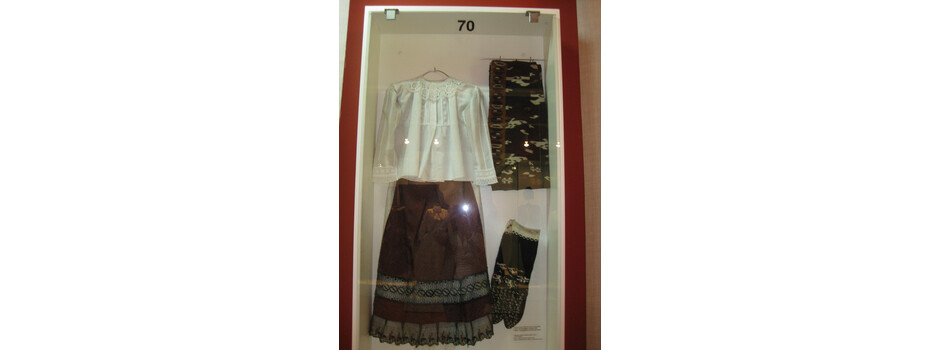Constructing Representations of Women on Ethnographic museums exhibition
Published on Oktober 5, 2019/March 20, 2020© Tijana Jakovljević-Šević
One of the criticisms of the settings in traditional museums concerns the neglect of the presentation of women. However, through numerous examples of ethnographic exhibitions, I notice that, at least in the context of ethnographic museology, women's topics play their part, but are always set in several discourses that create limited representations of women in the past. In order to show how much and in what way women are visible in museum settings, I observed permanent ethnographic settings in several museums in Serbia.
The elements through which the presentations about women are constructed in the observed settings are as follows:
Dressing:
Exposed clothing, mainly costumes, is labeled in the context of a woman's social status (clothing for girls, brides and married women) and places the woman in different social and age categories.
House and outdoor work:
Through the reconstruction of the interior of the house, in which the devices for processing raw materials and textile production (spindles, cuttings, looms and the like) are almost invariably placed, information is provided on the work of women in the production of home textiles and clothing for the needs of the family.
The reconstruction of the appearance of the kitchen or hearth indicates food preparation work.
Presentation of agricultural tools and photographs related to this topic indicate the work of women in maintaining the household, keeping domestic animals and participating in field work.
Presentation of various aspects of daily life in which a woman is placed in the role of wife and mother:
These representations of women's gender roles in exhibitions can most often be seen through exposed photographs.
From the above it can be concluded that women on permanent ethnographic settings are most often visible only within the roles of the wife, mother and as part of a wider group to which they belong. Due to the limited topics through which women present themselves in ethnographic settings, it is impossible to clearly perceive, for example: their position in the family, local and wider community, women's participation in community life, their daily lives, leisure, intimate life, gender violence and other topics that refer to real life.
How Sanja Sarnavka in the exhibition catalog I wonder, I wonder, can it be different? (Zagreb, 2000) states that the books are full of stereotyped gender roles and images of both women and men and are clearly demarcated privately and publicly. Presentations about women extend from the bedroom to the pantry. "Women give birth, cook and wash ... and sometimes they are beautiful." This statement can also be transferred to permanent ethnographic settings.
I would agree with Sharon Reilly, who states that restricting museum presentations of women to the roles mentioned above leads to the conclusion that the influence of women is limited to a very narrow area. Also, the position of women in society is portrayed as unproblematic, harmless and uncontroversial. The absence of any reference to the present implicitly indicates that gender discrimination is solely a thing of the past.
However, the analysis of the settings must take into account the type of museums in which they are located and their function. The main goal of such ethnographic exhibitions, as well as the museums in which they are set up, is to show the common heritage and cultural identity of the population of Vojvodina (museums in Vojvodina), that is, the common identity of Serbs in the settling areas (Ethnographic Museum in Belgrade). Therefore, it is clear that the revelations of alternative forms of the past, portrayed through female voices, in exhibitions designed in this way, cannot even find their place. Women's history will become more visible and differently conceived as public narratives change, which in all state structures are directly reflected in national museums.
References:
Sarnavka, Sanja, I wonder, I wonder, can it be different?, MGZ, 2000.
Paula Assunçao, Anna, "(Non) visibility of women in museology: stirring calm waters", Informatica museologica 34 (3-4), Museum Documentation Center, Zagreb 2003.
text and photos: © Tijana Jakovljević-Šević
The photos were taken in 2015 at the Museum of Vojvodina, the Native Collection of Sremski Karlovci of the City Museum of Novi Sad, the National Museum of Zrenjanin and the National Museum in Pancevo.
original in Serbian "Konstruisanje predstava o ženama na etnografskim muzejskim postavkama"
to the exhibition "Wie weiblich ist die Stadt? Fürth und die Partnerstädte"
back to "blog EN"
back to "home"
BLOG
blog EN
blog SR
blog DE
Kategorien DE:
"Portraits und Interviews"
"Rück Blick Nach Vorne"
"Literarisches Bufett"
"Vermittlung"












